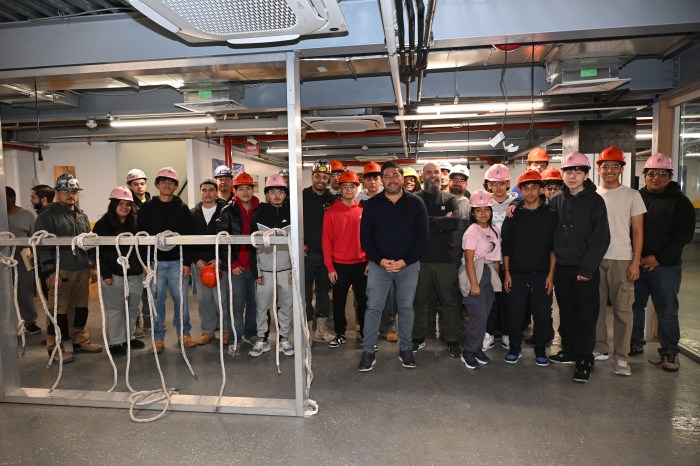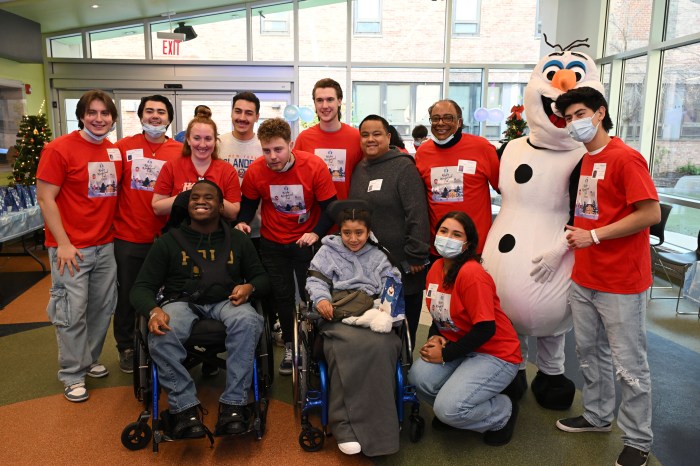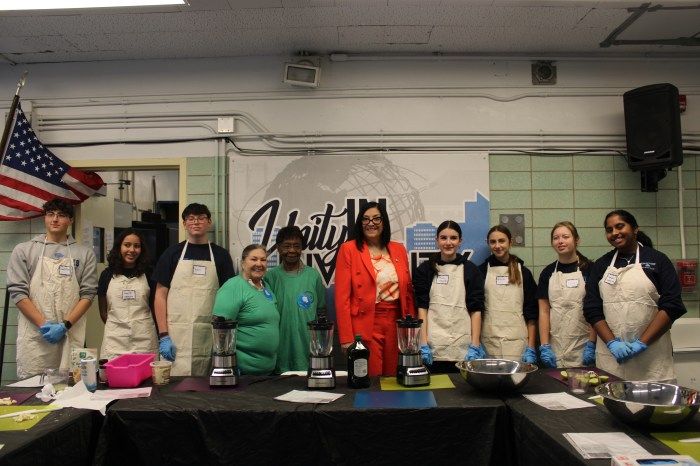What do a jealous role of duct tape, a thieving wolf, and a pencil fearsome of sharp objects have in common? Each sprouted from the imagination of sixth-, seventh-, and eighth-grade playwrights at I.S. 10 in Astoria.
Two months ago, the program, a part of the Astoria Performing Arts Center, Inc. (APAC), commissioned eight Queens kids to write plays - starting with an inanimate object as a character and then adding a person or animal. Upon completion five weeks later, adult actors and directors performed a reading of the short plays in the I.S. 10 auditorium for parents and fledgling fans.
Led by APAC staff and adult volunteers, students had to consider stage direction, dialogue, and plot, as well as think like the puppies and pencils that they brought to life. As an exercise to help them get into character, the kids wrote a letter to themselves from the point of view of their creations, asking themselves to write a play. They also got a helping hand from APAC’s resident play-creating aficionado, Susan Willerman.
“Students will sometimes say, ‘I’m finished,’ but [Willerman] will say, ‘I don’t really understand this. Why would the character say something like this?’” said APAC’s Executive Director Taryn Drongowski.
“I was surprised by how many of the students identify themselves as writers by the end,” Drongowski said.
Developed by Drongowski, the youth playmaking program began last year at I.S. 26 in Astoria, where organizers held two sessions of the program - during the winter and spring. After holding two sessions at I.S. 10 this year, organizers hope to hold the project at the massive middle school again next year, then possibly move to another location in 2009. After each session is finished, the plays are bound into books, which are donated to the Astoria branch of Queens Library.
“I hope it evolves more and more each year, a bigger and bigger audience and a wider net of actors and directors,” Drongowski said.
Drongowski said that she had always wanted to help children create plays, long before she was hired by APAC in 2005. Drawing from a similar program, the 52nd Street Program in Manhattan, APAC’s project offers the neighborhood actors the opportunity to give back to the community, using their crafts.
“Where else are they going to get the opportunity to play a pencil, a kangaroo, a wolf?” Drongowski said. “It’s just a unique experience for the students, a unique experience for actors and for the directors. I personally find it very energizing to see that interaction.”
Professional actor Ian Knauer has performed in Broadway and off-Broadway shows, but jumped at the chance to help with APAC’s project, helping with the classroom sessions and performing in the final reading.
“I’ve played a number of things in my life but not a soccer ball,” he joked about his role in sixth-grader Jay Prieto’s play as the talking ball, Addies. During the play, “GOAL!” a soccer player finds out about his ball’s ability to speak, then asks the ball - Knauer - to help him win the FIFA World Cup.
“All the balls in all the sports are alive,” Knauer’s character tells the soccer player during the performance. “So if the secret gets out, all players will only use me. Then all my ball friends will get mad at me, and they’ll try to pop me. That’s my greatest fear.”
Fellow Ohio native and actor Emily Edgerton got the chance to play two parts in the performance - a sick tree and a celebrity’s puppy. To make her canine impression more believable, Edgerton painted her entire nose a dark brown. The puppy’s name was “Gabriella.”
As part of the playmaking process, students also had to come up with realistic names for their creations.
“You can’t have a tree and call it ball,” said Verenice Aracena, 11, who wrote about an evil vet and two puppies, who protected themselves using their imagination.
Twelve-year-old Rebecca Rossoff wrote about a lonely tree, but her mom, Judy, said that her daughter has been anything but while she was involved in the playmaking program.
“She is always happy, but she looks forward to coming to school so much more,” Astoria resident Judy Rossoff said, from her seat in the I.S. 10 auditorium. “I hope she can continue her acting and playmaking, expressing herself creatively.”



































